Rare bird bonanza on WWT reserves this spring
Wetlands in spring are, let’s face it, the place to be. With migrants inbound, the sound of birdsong filling your ears and breeding season in full swing, how could you avoid it as your main destination?
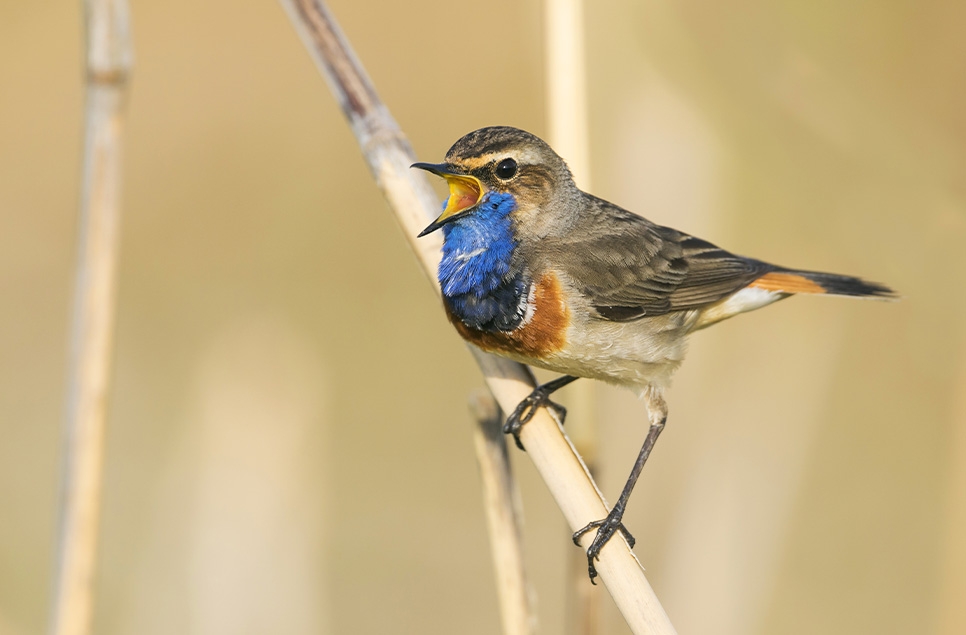
Wetlands are of course the target for a huge number of bird species too. However, some of them arriving this spring have found themselves on an unusual trajectory; wanderers from across the Atlantic or overshoots from the Mediterranean. It’s been one to remember; read on for the most exciting finds.
An early start
We start way back in February, in what many of us would quite rightly call winter. But it’s a necessary prelude to spring as there’s a very notable bird to highlight. A white-rumped sandpiper, that at the time of writing, is the only one seen in the UK this year, traditionally appearing on autumn migration.
The last Slimbridge record was way back in September 2007. So the discovery of one at Slimbridge on Valentine’s day was, to put it mildly, just lovely. This is an American species of wader, or ‘shorebird’ as they’re called on their home continent. They look a little like a dunlin and you’d need to be watching closely to glimpse the white rump.
Usually breeding in the far northern tundra of Canada and Alaska and wintering along the southern Atlantic coastline of South America or the Caribbean, this bird was lost. It was likely blown east across the Atlantic in a storm, perhaps last autumn as it tracked south to its wintering grounds. Instead of wintering in South America, it might have spent the winter on the coast of West Africa.
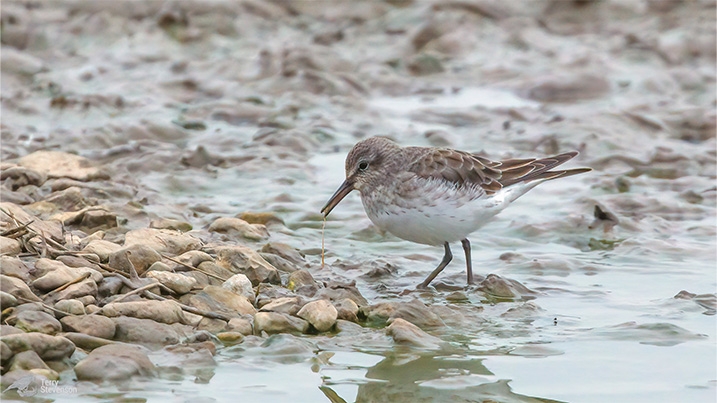
The white-rumped sandpiper remained faithful to Slimbridge for exactly one month, last being seen on 14th March, allowing plenty of time for even the most relaxed twitcher to catch up with this ‘peep’ (that’s another word used in America for small waders. Always have your birder dictionary at the ready).
A vagrant teal
On 21st March, another wanderer from ‘across the pond’ appeared; a drake green-winged teal. You’d be forgiven for saying it is similar in looks to Eurasian teal; the American species sports a vertical white flank streak instead of horizontal.
It would likely have crossed the ocean in a previous autumn, but we simply don’t know where these vagrants head to spend their time on ‘breeding grounds’, but they’d be extraordinarily lucky to find a member of their own species.
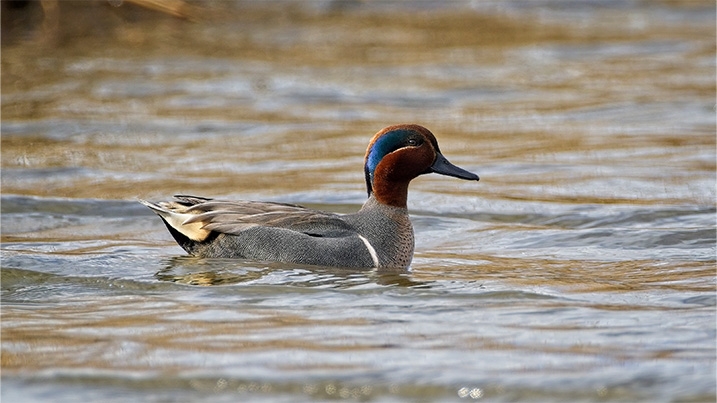
Slimbridge’s green-winged teal stayed for a couple of weeks and was last seen on 3rd April.
Another rare wanderer
It’s three American birds in a row now as we take a trip further south to Steart Marshes with another rare wader, this time a pectoral sandpiper. And no, they aren’t known for using the chest-press at their local gym, but instead get their name from the sharp colour margin on the breast.
Uncommon as a spring migrant in the UK, pectoral sandpipers breed across much of the Arctic tundra, from the Kara Sea in northern Russia east to Hudson Bay in Canada. This one was likely heading up to the Siberian breeding population after wintering on the African coast.
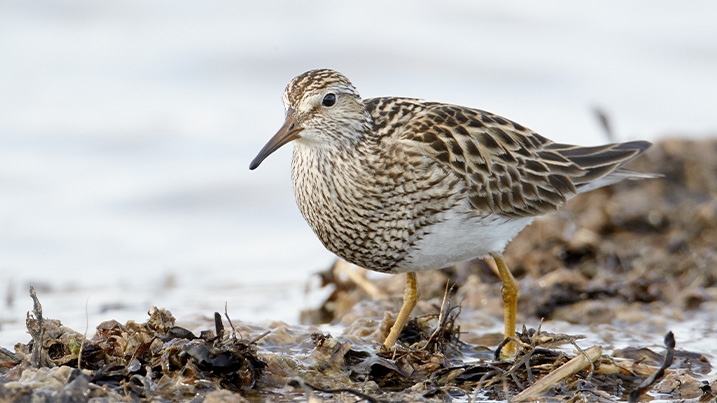
Although it was present for over a week from 11th-17th April, the only photos of the Steart bird on social media are somewhat blurry. So we’ve included a stock image, allowing you to get your fill of these birds in all their pectoral glory.
A brief encounter
Back at Slimbridge (we promise, other centres get a look-in soon), a brief red-rumped swallow was spotted over South Lake on 12th April, but no sign after. This species looks much like a barn swallow but for their red lower back (it’s an easy spot to miss with the sun lotion).
A common breeder around the Mediterranean, this one would have overshot breeding grounds when returning from wintering in sub-Saharan Africa.
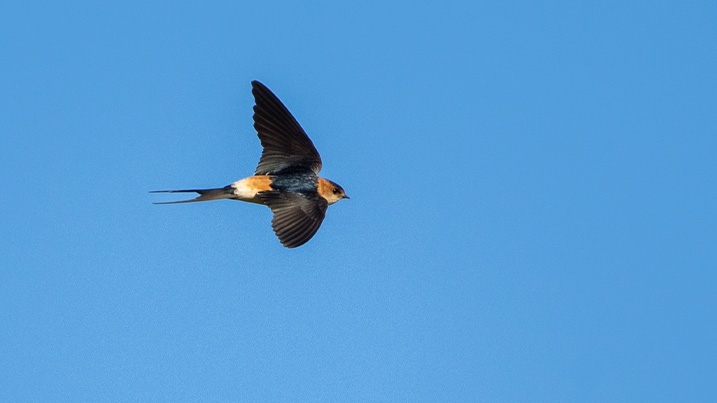
The first of many
We move to Welney now where, on 21st and 22nd, a black-winged stilt (remember the name, there’s more to come) was present, but for just two days.
And towards the end of the month, WWT Llanelli came in, all pistons firing, with an incredible three black-winged stilt on their Western Scrape on 28th. They showed well for the day – but unfortunately no sign after that.
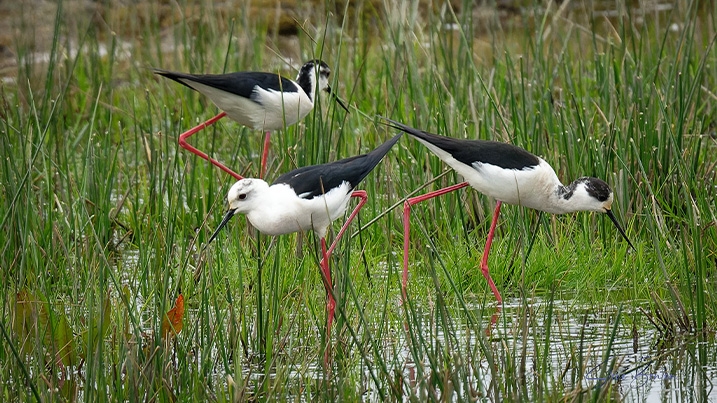
These stilts were part of an influx nationally, with multiple birds being seen at wetlands across the country.
Around this time up at Martin Mere, a probable black-crowned night heron was reported in flight but no sign after.
A special beauty
April was also the month that WWT London got in on the action, with a turtle dove appearing on 23rd. Whilst not technically a rarity, their breeding numbers have plummeted in the UK, so every sighting of these beautiful birds is special.
Another score for Steart
Steart Marshes continued its run of rare waders on 8th May by scoring a male black-winged stilt. Steart is no stranger to the species, with a pair raising three chicks on the reserve in 2020.
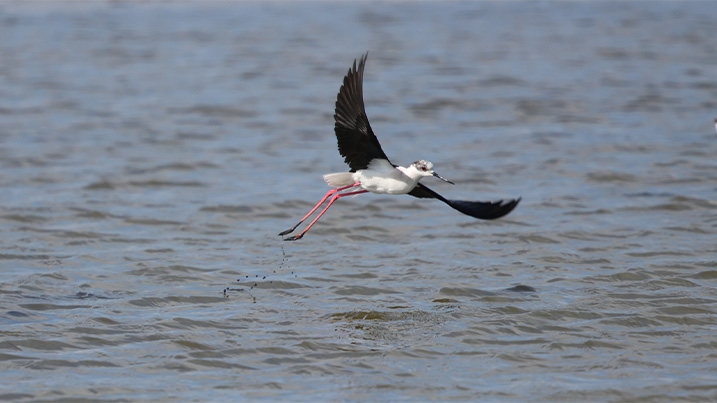
Three years in a row for Slimbridge
Back up to Slimbridge now with a male white-spotted bluethroat returning to its territory on 14th May for the third consecutive year. It occasionally has been showing better than in previous years; will this be the year that it attracts a mate? They’re a common migrant breeder on the wetlands of the near continent.
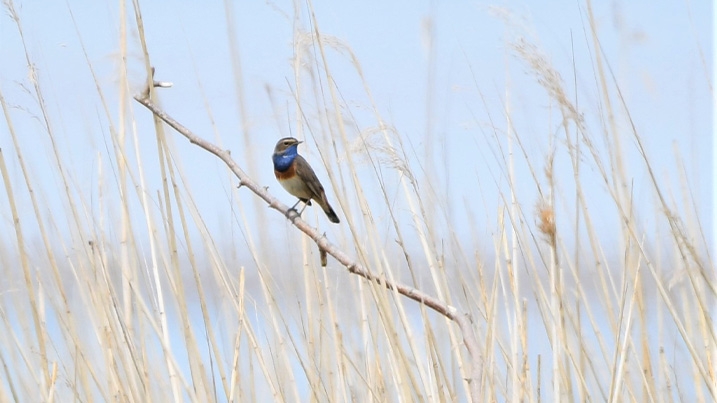
More stilts and stints
On 15th of May, another black-winged stilt was present at Martin Mere showing well throughout the day but flew off north that evening and wasn’t sighted after.
After the brief visit from their April bird, Welney had another black-winged stilt turn up again a few weeks later on 16th May and then two birds seen together on 18th, with four Temminck’s stints on site too. This small wader species migrates to breeding grounds in northern Europe from Africa and are most often seen when easterly winds blow them towards the UK.
Welney has a long history of being a great site to see black-winged stilt, being reported here in a number of recent years. Highlights include hatching chicks here in 2017 and a family of 6 being seen in July 2022.
A breeding beauty
On 17th, London again score on the not-rare-but-beautiful cards with an adult black-necked grebe. More often seen in duller winter plumage, an adult in breeding finery is a sight to behold.
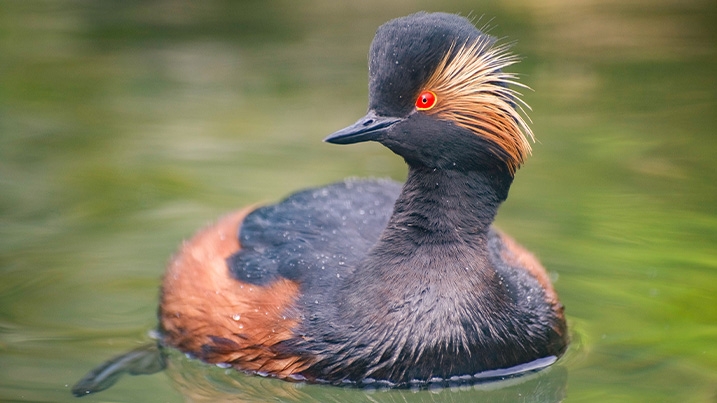
Fleeting visits
Back at Llanelli, an adult purple heron was seen briefly on 20th and 21st. Will it stay for the summer and give better views?
A similar story occurred with a singing male great reed warbler at Martin Mere, present on the 21st May, but not the day after.
Like the purple heron, this is another species that usually breeds in continental Europe, with records from birds that are seeking out new territories. They’re like a large version of our reed warbler, but with a hoarse, very loud, far-carrying song.
A second sighting
Remember the male black-winged stilt seen at Steart Marshes on 8th? It was last seen there on 20th, and guess who should be seen at Slimbridge on 21st? A male black-winged stilt…compare the plumage and it is extremely likely that this is the same bird, still tracking north. It feels fairly safe to name this the species of the spring for WWT sites, with records across half our reserves.
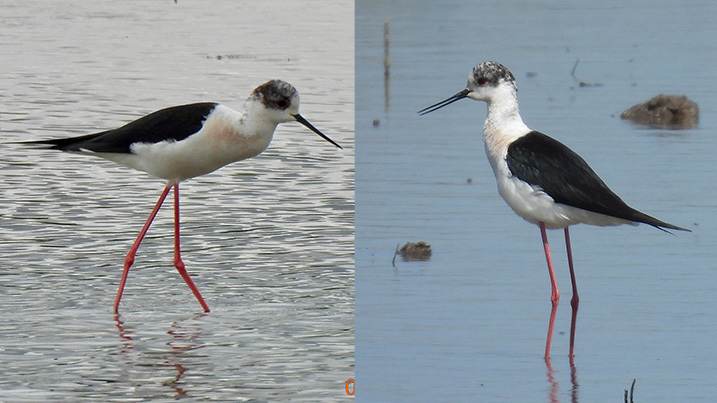
A mystery appearance
In the last week of May, there were yet more rarities to be seen at WWT sites.
Llanelli joined in on the pectoral sandpiper fun with one seen on 30th and 31st May. Whilst Arundel were paid a visit by a pair of ferruginous duck on 28th. Their natural breeding range is from Poland eastwards, but feral populations are known to occur further west; we’ll never know where these two came from.
The end of the road?
You might well be wondering if these vagrant birds ever find their way back to where they should be. Well in the case of the Mediterranean overshoots, it’s likely that they realise they have travelled too far and can re-orientate and head back south, unless they find others of their species and stay here to breed.
However for the birds that have crossed the Atlantic, getting back home might not be a feasible option. They’re still able to thrive, spending their years migrating between Europe and Africa instead of North and South America. They’ll hang out with similar species, but of course are very unlikely to find one of their own with which to breed. That situation can give rise to hybridising – a story for another time!
Time to squeeze in one last sighting...
And the story continues with that black-winged stilt that is roaming the south west. It was present at Slimbridge until 2nd June, with no sign after that. On the 3rd, guess what should turn up at Steart Marshes? Yep, a black-winged stilt – we're waiting to see if pictures show the same plumage patterns as before.
If you’ve managed to get anywhere near as confused trying to keep track of the various stilt visits as we did writing this article, we’re sorry (not sorry, they’re ace), but there is more to come.
Changing climate, changing patterns
Our warming climate means that birds such as the stilts which traditionally breed around the Mediterranean are changing their breeding distributions rapidly. So we will be seeing more of these birds and likely more breeding records. And at the time of writing, we are only in the first week of June – time yet for more rarities to be found.
The south-north nature of spring migration means rarities inevitably appear more often at our more southerly sites. However, WWT Washington saw a near-adult Iceland gull stay for much of March and April and Caerlaverock had a hooded crow on 26th March. Might they fare better with rare sightings in the autumn period?
And so much more to enjoy
If you didn’t manage to connect with our star species this spring, our sites have had a huge amount of birdlife to offer as species migrate through or stay to breed.
Try reading out this lot without taking a breath; tundra bean goose, garganey, greater scaup, long-tailed duck, quail, corncrake, bittern, cattle egret, white stork, spoonbill, osprey, hen harrier, Montagu’s harrier, curlew sandpiper, Temminck’s stint, little stint, wood sandpiper, spotted redshank, pomarine skua, Caspian gull, little gull, black tern, short-eared owl, water pipit, whinchat, Dartford warbler, grasshopper warbler, Siberian chiffchaff, yellow-browed warbler and spotted flycatcher.
As we said earlier, spring wetlands are the place to be.
Join us soon to see the spectacular wildlife on our wetlands.
Plan your visit


